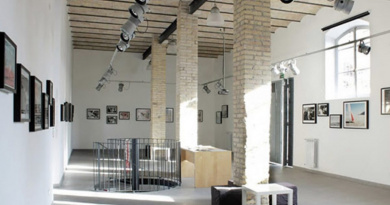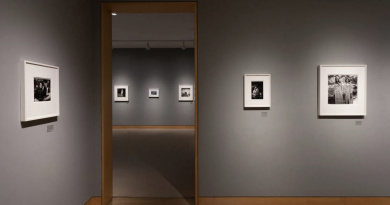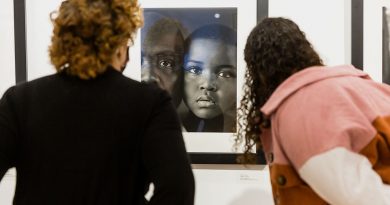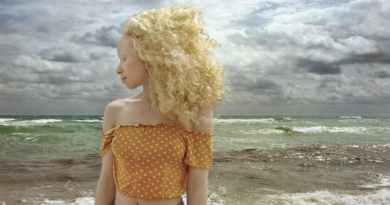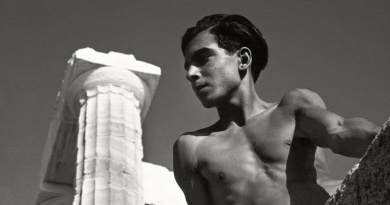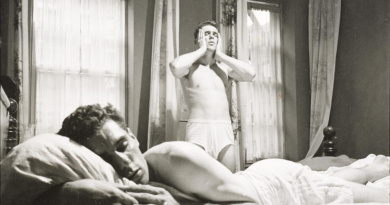Erwin Olaf (*1959) is one of the most renowned contemporary artists in the Netherlands. The Kunsthalle München is now staging the first, large- scale solo exhibition dedicated to his œuvre in Germany. Selected photographs, short films, sculptures and multimedia installations from a career spanning over forty years trace Olaf’s artistic development in a loose chronological order, from analogue to digital techniques, from the rebellious photojournalist of the 1980s to the sophisticated storyteller of the 2000s. Specially created for the retrospective in Munich, his latest series, Im Wald (In the Forest, 2020) provides a final highlight to the exhibition.
Olaf creates worlds, right down to the smallest detail, that bear a striking resemblance to ours, yet are frequently enigmatic. Repressed situations appear to lurk behind the seductive visual appeal, taken from the film and advertising world. His clearly staged mise-en-scène often hints at the abyssmal. To this end, the photographic artist deliberately sows confusion, uses ambiguous symbols and leaves his narratives open to interpretation. It is up to the audience to become more receptive to these allusions and fill the empty spaces with their own associations and conclusions.
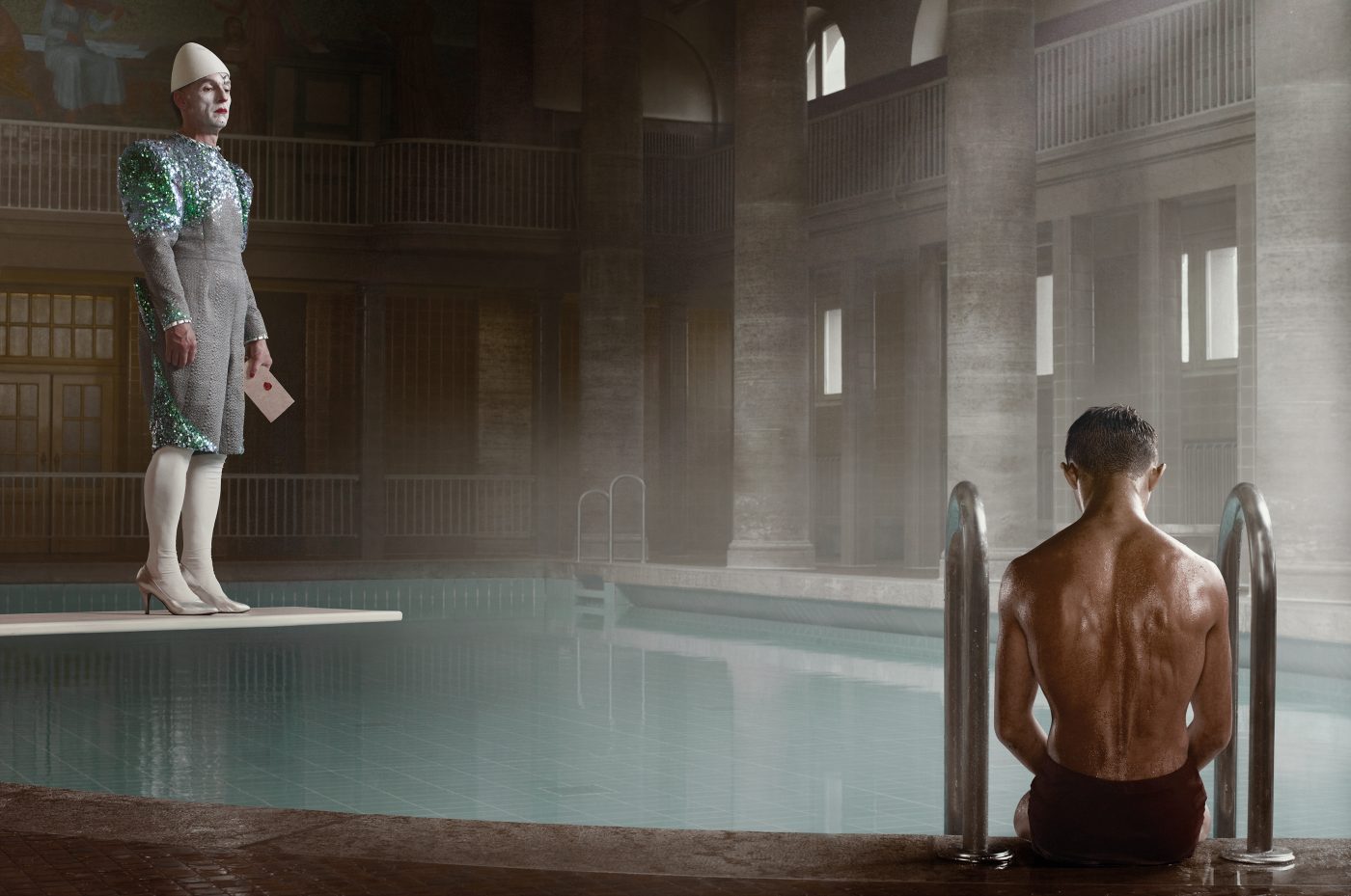
Berlin
Stadtbad Neukölln – 23rd of April, 2012
2012
© Erwin Olaf
Courtesy Galerie Ron Mandos Amsterdam
BETWEEN POLITICS AND THE POETIC
“I am on the side of freedom. The freedom of the individual, which may not be dominated by a particular group.”
While studying journalism in Utrecht, later graduating in 1980, Olaf realised that he preferred to tell his stories in pictures rather than in words. In the early 1980s, he published his first few documentary photographic series in international magazines of the LGBT scene. At the same time, he worked on photo series in which he explored the themes of democracy, equal rights and self-determination. Olaf’s deep interest in politics and society is the recurring theme throughout his œuvre. To this day, he is a prominent voice in the Netherlands, standing up for the right of the individual to free expression. Never one to shy away from controversy, he stops at nothing in the fight for tolerance and acceptance.
In his early work, the artist used provocation as a means of initiating the societal discourse that he considered imperative. For example, his Chessmen series, taken in 1987/88, portrays the subject as a sexual being in a subversively erotic power structure. Since the 2000s, he has focused mainly on moods and emotions, such as the release of the first tear after receiving terrible news in Grief (2007) or the limbo of waiting in his series of the same name, Waiting (2014). However, Olaf has also repeatedly captured specific political events. For example, his series of works entitled Troubled, Awakening and Tamed & Anger (all 2015), process the attacks on the staff of the satirical weekly Charlie Hebdo and the cultural center Bataclan in Paris in 2015.
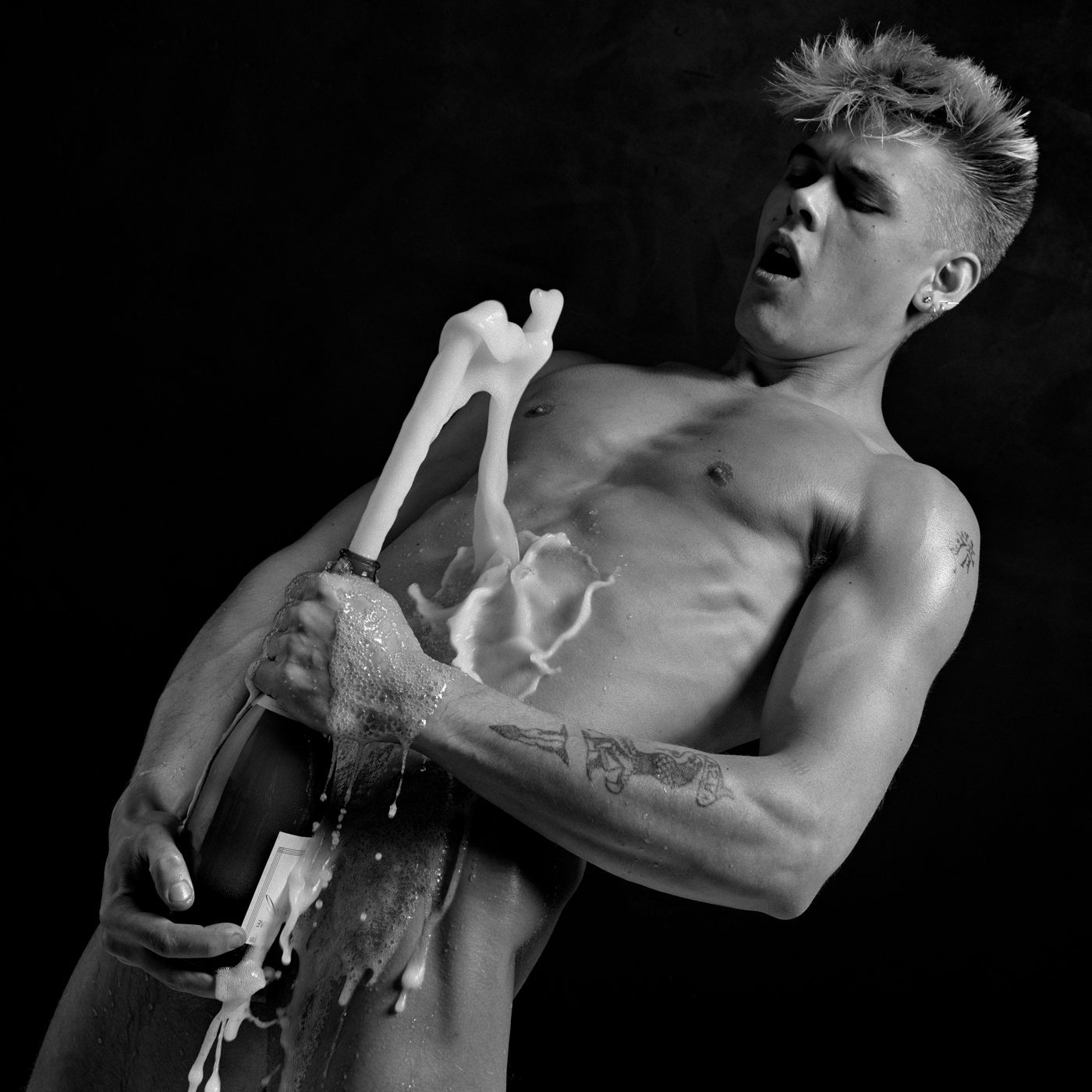
Squares
Joy
1985
© Erwin Olaf
Courtesy Galerie Ron Mandos Amsterdam
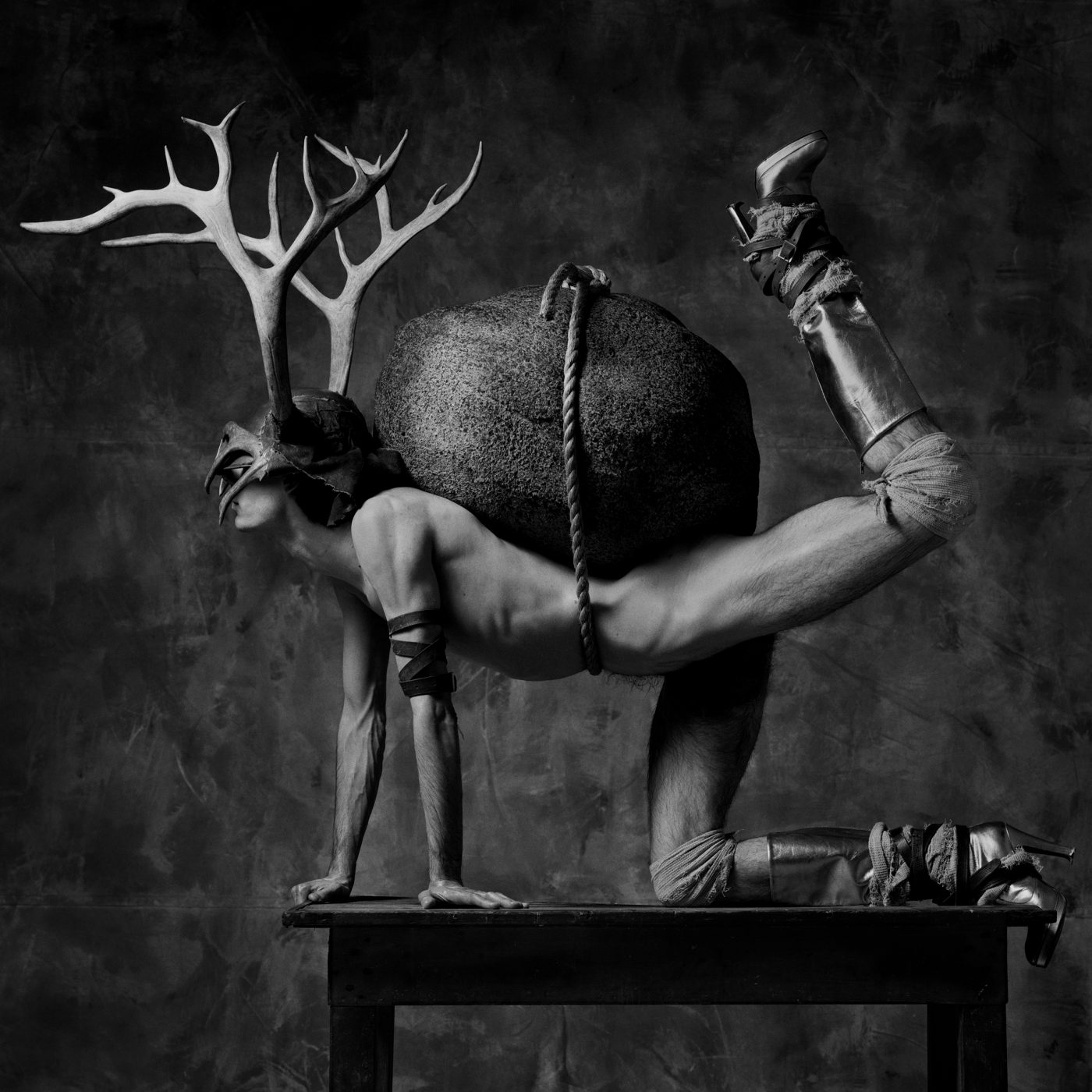
Chessmen
Chessmen XXIV
1988
© Erwin Olaf
Courtesy Galerie Ron Mandos Amsterdam
THE INSPIRATION OF PAINTING
From the beginning of his artistic career, Olaf was not only inspired by the works of other photographers but also by paintings. For example, his exploration of the Old Masters gave him the idea for his Ladies Hats series, which he began in 1985. In terms of composition and lighting, he took his inspiration first and foremost from Rembrandt’s self-portraits. However, from a conceptual perspective, he transformed the reference to depictions of hatted men in the works from the Golden Age by having his models wear ladies’ headgear. In so doing, he also highlighted the impact of attire on a person’s state of mind and thus on their attitude and expression. His latest series Im Wald (In the Forest, 2020) was also modelled on painting. Above all, it evokes works by the romantic artist Caspar David Friedrich or the symbolist Arnold Böcklin. Unlike in the 19th-century scenes, however, humans appear to have lost their connection with nature in Olaf’s large-format, black and white photographs. A new experience for Olaf, the photo shoot in the mountains of Bavaria and Austria was the first time he had worked in a natural setting.
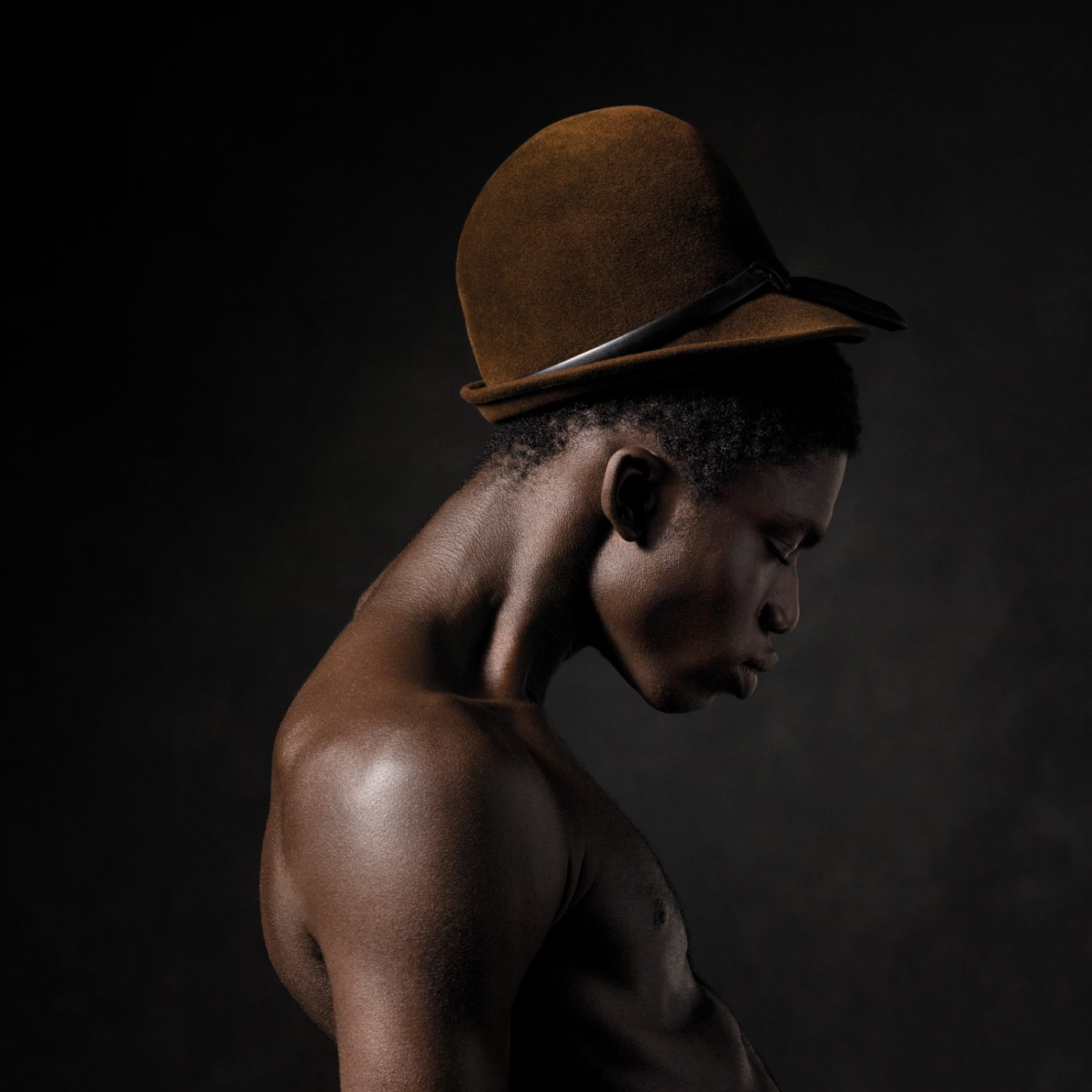
Ladies Hats
Hennie
1985
© Erwin Olaf
Courtesy Galerie Ron Mandos Amsterdam
MULTI-MEDIA PHOTOGRAPHY
Since the early 2000s, the artist has increasingly used other media to complement his photographic series. To the Rain series (2004), in which the characters appear to be frozen in a moment of paralysis, he added a short film. Thus, his photographs’ narrative was enriched with the progress of time distinctive for moving images. By juxtaposing the two media in the exhibition space, he embeds his photographs in an acoustic background. In other video works, such as Life – For Mom (2016), a tribute to his late mother, Olaf explores the boundaries between the media of photography and film. The film loop is a sequence of thousands of single shots taken every minute of a bouquet of tulips over a period of ten days. It conjures up an endless cycle of decay and growth, visualised in the perpetual withering and blooming of the flowers.
In his Europe series (2016), the artist reflects on events that gave rise to the debate on society’s attitudes to the human body and gender. To convey the crucial aspect of corporeality in the exhibition space, Olaf produced 3D photographs of his models, which were subsequently turned into sculptures. Thus, Olaf created Eine Armlänge Abstand (At Arm’s Length), an almost three- metre sculpture, as a critical commentary on the polemics following the assaults on women on New Year's Eve in Cologne in 2015/16.
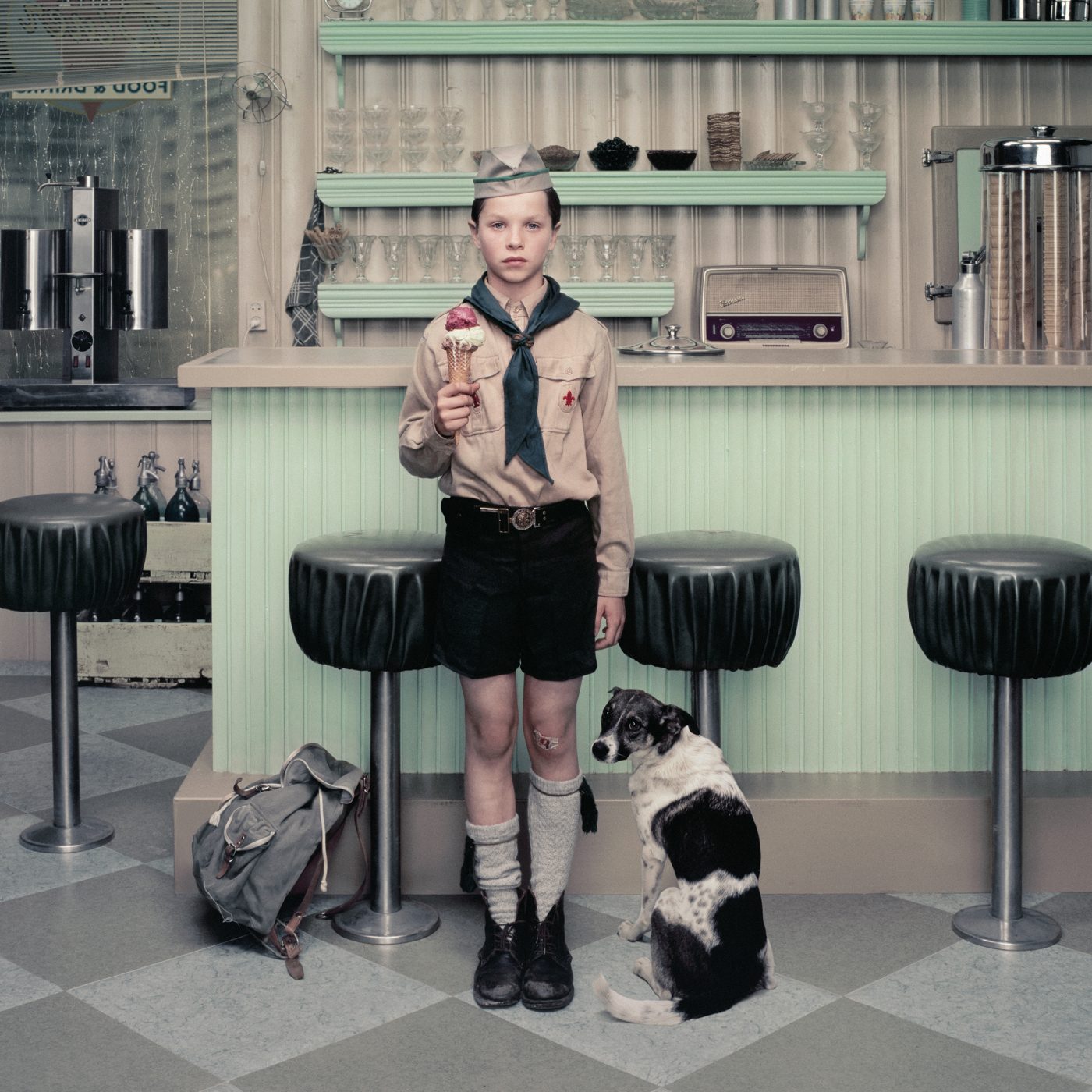
Rain
The Ice-Cream Parlour
2004
© Erwin Olaf
Courtesy Galerie Ron Mandos Amsterdam
CONSTRUCTED WORLDS
“If I wanted to see the ordinary world, I would open the window.”
Blacks (1990) is a black-on-black series of baroque portraits of a fictitious royal household. Olaf worked with a team of make-up, costume and set design specialists for the first time to realise the project. His subsequent projects increasingly resembled large film productions. Moreover, at the turn of the millennium, Olaf began making greater use of digital photography, along with the possibilities it offered of manipulating images. In Royal Blood (2000), for example, he shows models as historical figures such as Sissi or Princess Diana with gory wounds, in the visual imagery of classical martyrdom scenes. Exploring the relationship between fact and fiction is still a central feature of Olaf’s artistic œuvre to this day.
Only in recent years, Olaf developed his series based on existing locations, thus blurring even more the line between reality and artistic fiction. Thus, for his trilogy Berlin (2012), Shanghai (2016) and Palm Springs (2018), Olaf left his studio and took photographs at characteristic sites in the eponymous cities. Marking his 60th anniversary, the Kunstmuseum and the Fotomuseum in The Hague showed a hugely popular exhibition in 2019. The same year, a selection of Olaf photographs was on display at the Rijksmuseum in Amsterdam. At the opening of the exhibition, he was awarded the Knight of the Order of the Netherlands Lion.
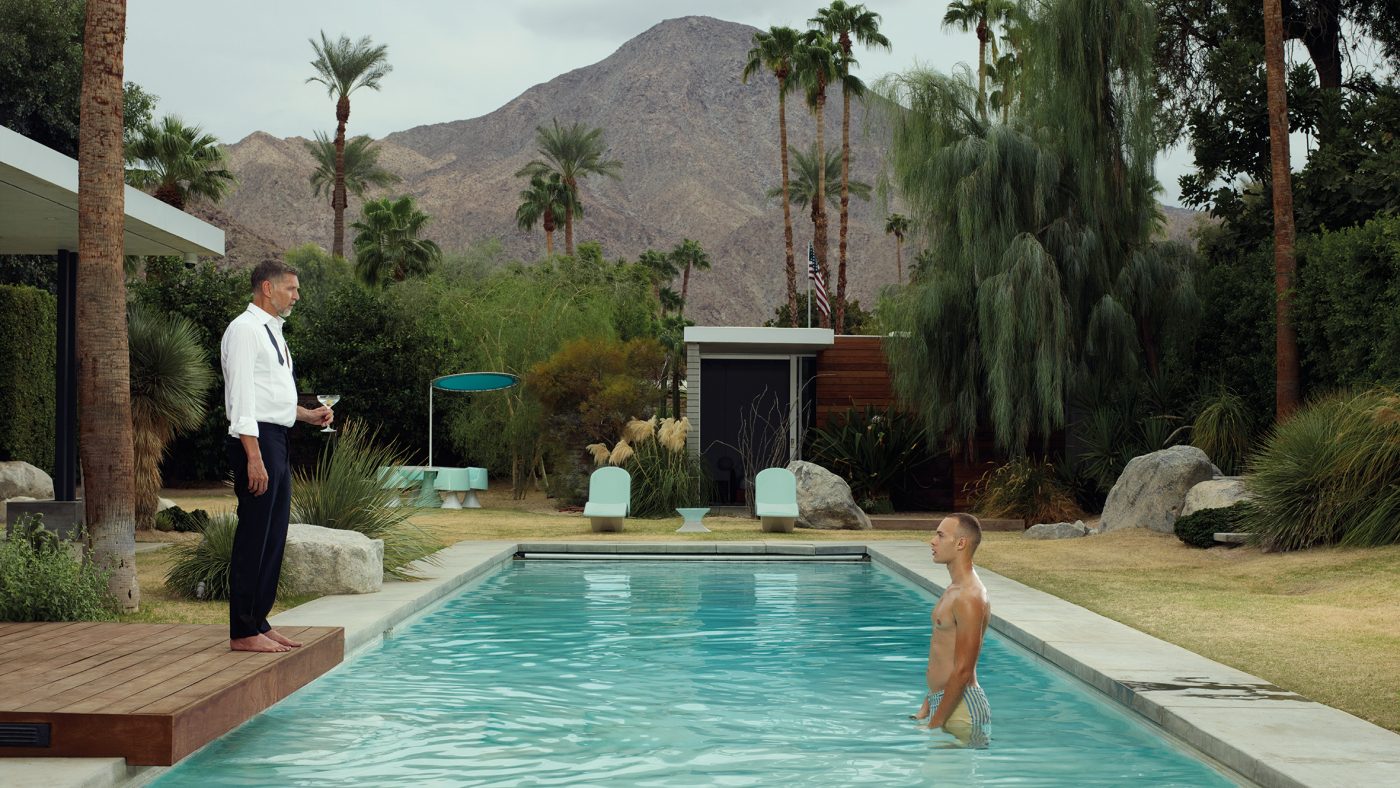
Palm Springs
American Dream, Self-Portrait with Alex I
2018
© Erwin Olaf
Courtesy Galerie Ron Mandos Amsterdam
With around 350,000 visitors every year, the Kunsthalle München is one of Germany’s most prestigious exhibition houses. Located at the heart of Munich, the Kunsthalle stages three large exhibitions a year on a variety of themes. Equipped with state-of-the-art museum technology, the approximately 1,200 m2 exhibition space is a resprected platform for artworks representing a variety of genres from painting, sculpture, graphic art, photography and crafts, through to design and fashion. The Kunsthalle München’s diverse programme alternates monographic exhibitions with thematic projects, yet also includes interdisciplinary concepts.
Accompanying the exhibition Hatje Cantz Verlag publishes an extensive catalogue with ca. 220 colour illustrations. Edited by Roger Diederen. With essays by Daniel Hornuff, Anja Huber, Claudia Peppel, Franziska Stöhr and Estelle Vallender.
ERWIN OLAF. STRANGE BEAUTY
14 May to 26 September 2021
Kunsthalle der Hypo-Kulturstiftung
Theatinerstraße 8
80333 München





